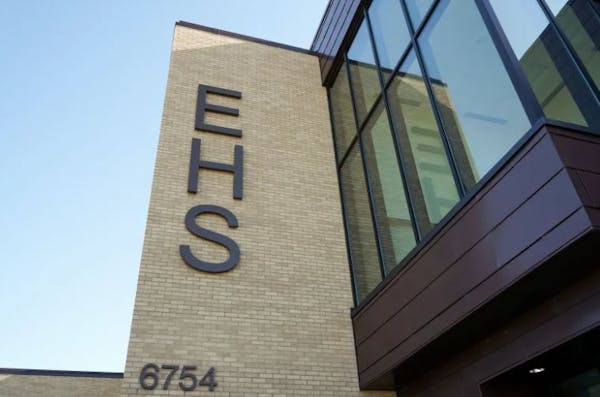Online school has been working well for second-grader Lola Anderson. But like a growing number of younger students, she logs on each day to a classroom in another district.
An online education boom followed the COVID-19 pandemic, as the number of schools offering virtual education in Minnesota nearly doubled from 37 in the fall of 2020 to 71 this year. But consolidation has started as the pandemic wanes — especially for online elementary and middle schools — limiting the options for families who want their children to continue learning online, and pushing more to look to other districts.
"We had to decide whether to send our kid back to in-person — which she's never done," or find a new online school, said Lola's mother, Denika Anderson. The Andersons live in New Brighton, but Lola attends Bloomington's New Code Academy. "Online works really well for her, so we're sticking with it."
More students attend online schools than before the pandemic, but online elementary school classrooms aren't as full as they were at COVID's height. Dipping enrollment has led many districts that opened virtual schools to close programs. Edina, for example, has enough students to sustain an online high school program, but the school board voted Jan. 9 to phase out the online elementary school after next year.
As smaller programs move toward closure, students who will stay online are sorting themselves into the remaining online schools, with longstanding virtual schools like Minnesota Virtual Academy and bigger programs like New Code Academy emerging as some of the dominant players.
"You need a critical mass of population in order to sustain a program," said John Weisser of New Code Academy, and a critical mass of per-pupil funding from the state and sending districts. Weisser said New Code Academy costs about as much to operate as an in-person school.
Steven Cullison, head of Edina Virtual Pathway — the online school that currently serves both elementary and high school students — estimated that about 5% of all students will thrive in online classrooms. But Cullison, a former economics teacher, said he thinks about economies of scale: 5% of children from any grade in a smaller district is not enough to fill a classroom.
Lola Anderson is among that small percentage of students.
Lola has always been a self-starter, figuring out how to read before kindergarten, Denika Anderson said, so she was never going to need lots of help in school. And online, Lola doesn't worry about how her anxiety and autism spectrum disorder might make her stick out, as she would in an in-person classroom. She can sit and wiggle on an exercise ball while attending school, without it being an issue for other students in her class.
Anderson said she feels like Lola is getting a solid education, with the strong standardized test scores to show it. Some things need work — her handwriting doesn't get much practice in a computer-based school, for example — but those are small issues, Anderson said, and very fixable.
"So far she tells us she wants to stay with New Code forever," Anderson said. "This is what's working and I don't see a reason to change that, unless a reason shows up down the road."
Anderson said she appreciates New Code's structured approach. There was enough live instruction and interaction with classmates that Lola felt like she was part of a class, even though she learns from her dad's home office.
Real-time instruction, like livestreamed lessons with the chance to ask questions and get answers, tends to be more appealing to a lot of families than schools that lean more on pre-recorded videos and workbooks, Cullison said.
Families of younger students are also looking for a well-rounded curriculum, with art and physical education, not just reading and math, he said. While those elements of live instruction and varied subjects drew families to Edina, there are no longer enough virtual elementary schoolers to keep the classes viable.
The virtual high school's numbers are buoyed by in-person students in Edina and elsewhere in Minnesota taking extra classes online, Cullison said, which he thinks may make the program sustainable. But elementary schoolers can't opt to take an extra course, he said.
Bloomington seems to have enough students to sustain New Code Academy's online program at all grade levels, Weisser said. And as more districts pull back from online learning, he said, about half of New Code's 200 elementary and middle school students are logging in from across Minnesota, from neighboring metro cities to as far away as St. Cloud.
Minnesota Virtual Academy — which is run by Houston Public Schools in Houston, Minn. — is one of Minnesota's oldest online schools, and has partnerships with districts that do not have their own online programs. About 1,800 students from across Minnesota attend, including about 450 in elementary school.
Houston Superintendent Mary Morem said that while enrollment is down from its pandemic peak, there are still more students in the virtual school than there were in fall 2019.
As schools reevaluate keeping their own online academies, Morem anticipates more cooperation with other districts.
"Smaller schools are going to reach out to me, or they're going to reach out to Minnetonka [which also has an established online school]," she said. "I feel like we're probably going to see an influx of that."

From gung-ho Vietnam medic to peacenik to proud Army veteran

Man sentenced to 20 years in fatal Woodbury graduation party shooting

Medcalf: Sen. Mitchell case reveals grace gap for the powerless

Minnesota jails lack treatment even as overdose deaths spike

